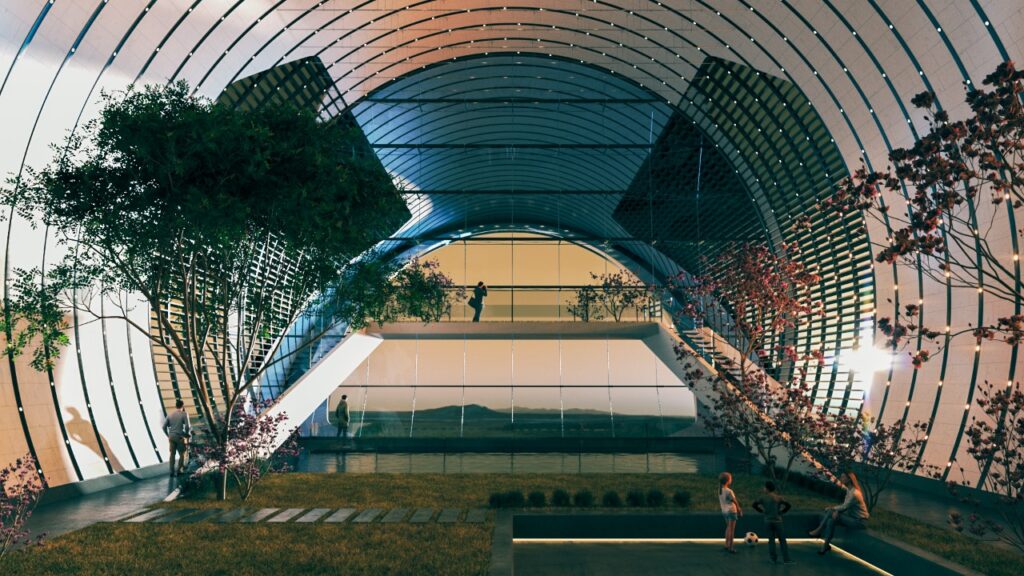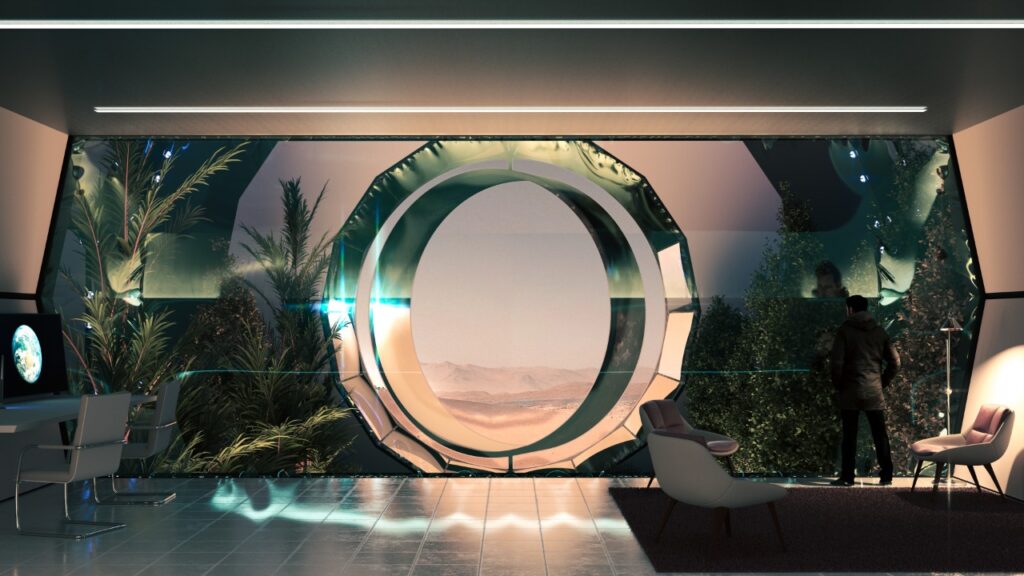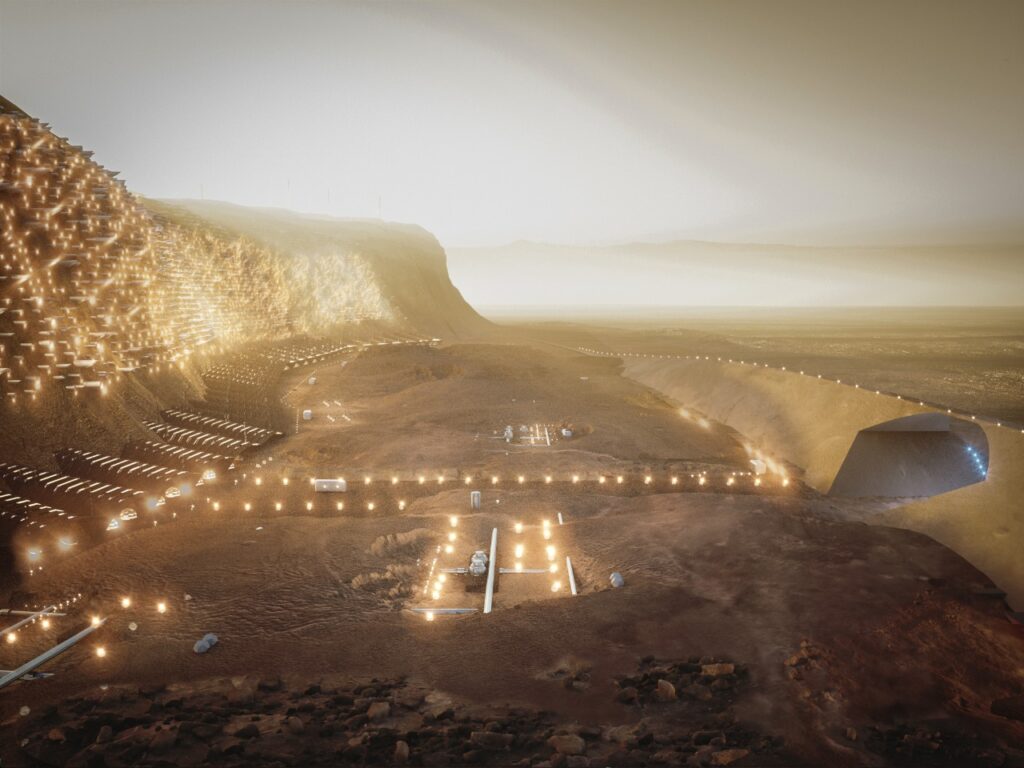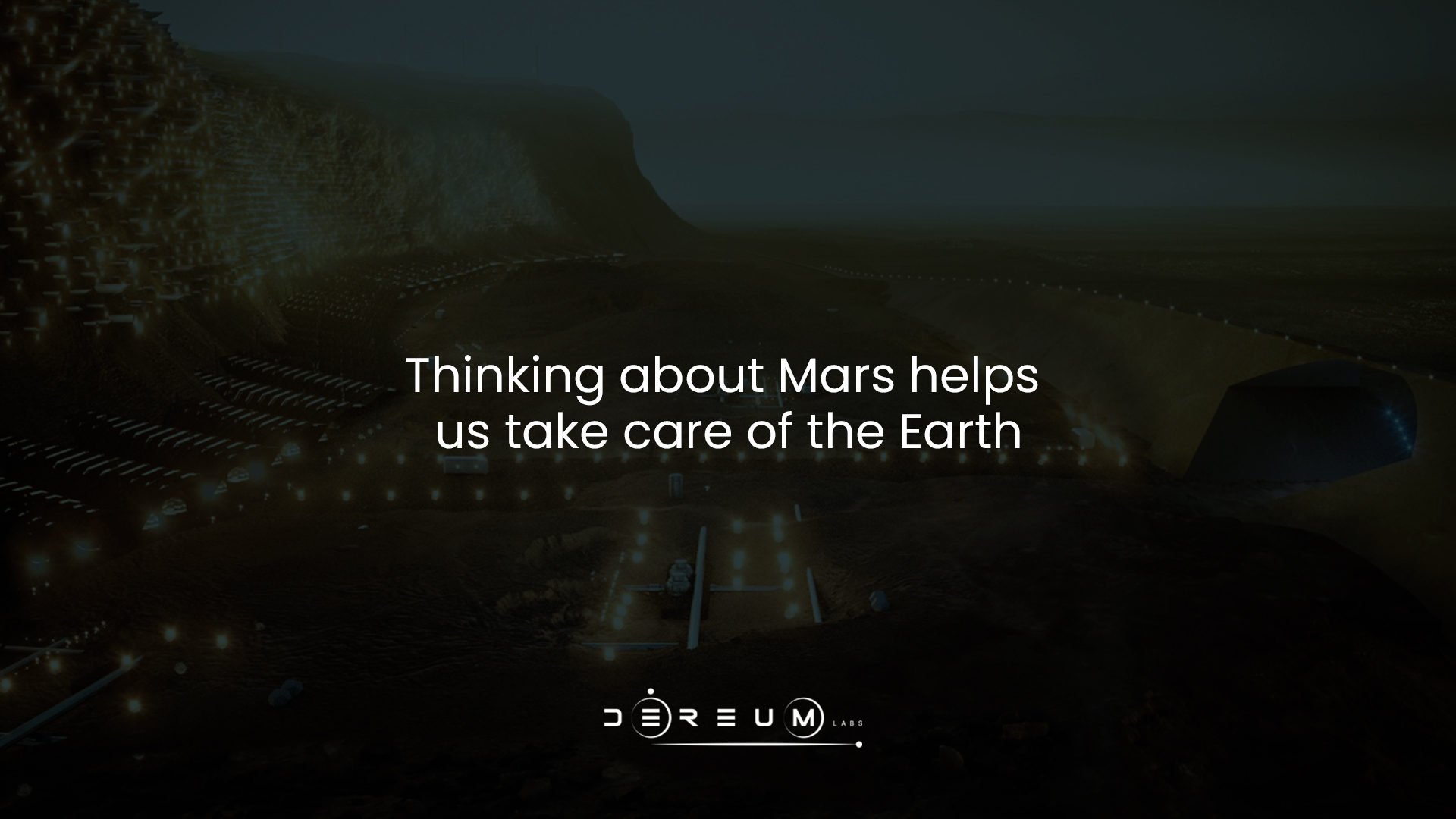Today, more than ever, caring for our planet is a priority for most nations and their peoples. The ways to achieve a more sustainable society that generates greater social and economic benefits without depleting the non-renewable resources at our disposal are diverse. But for a multidisciplinary group of scientists and architects led by Alfredo Muñoz, thinking about Mars and designing their first city in the Futuverse forces us to maximize resources to survive in a hostile environment, while at the same time allowing us to create effective solutions for the care of the earth.

The project is called Nüwa and is the first step initiated by ABIBOO Studio to create Onteco Mars, a science-based Futuverse on the Red Planet. Onteco Mars seeks to generate a digital and immersive replica of future settlements on Mars. The design of this Martian city considered its atmospheric conditions one third that of Earth, solar and cosmic radiation, sandstorms, etc., so it was determined that the best place to build it would be the side of a cliff in the Tempe Mensa area, located in the northern hemisphere of the red planet.
The most important aspect of designing the future of these human settlements on Mars is that the entire concept has been built on a scientific basis, not as a figment of the imagination of space enthusiasts, but as a product of collaborative work between leading experts from disciplines as diverse as Astrophysics, Architecture, Astrobiology, Space Engineering, Astrogeology, Psychology, Biology and Chemistry, among other fields. The purpose is to take advantage of the immersive technology of the Futuverse to create a digital twin of an environment destined to exist by 2100 in which it is projected to house 1 million people, with the contributions, ideas and expertise of women and men linked or not, to the space industry.

The Nüwa city is a complex vertical architectural structure embedded in a cliff, with modules divided into living, working and recreational areas, with food, air and water production systems. The entire complex will be interconnected by a three-dimensional network of tunnels, elevators and high-speed subway trains that will handle the mobility of people and goods. They also include green areas or urban orchards, community gardens with animals and water intended to provide physical and mental well-being to the inhabitants.

The cliff plateau will have infrastructure for the production of endemic Martian vegetation, energy production and various industrial processes such as in situ construction, key to the sustainability of life on the red planet. On the other hand, in the Cliff Valley there will be hospitals, schools and universities, sports and cultural activities, commercial areas and a train that connects to the space shuttle. In short, it is to take innovation and scientific research to the highest level of demand to validate the techniques that will make life viable outside the Earth, but with the knowledge acquired, it will be possible to advance more effectively in the solutions required by the Earth, move to a better use of our natural resources, generate greater economic value for all and enjoy benefits in health, food, mobility, construction and various industrial processes that would not be possible without the advancement of the space industry.
If you have any questions and you are curious or interested in discovering how your company or industry could take advantage of the knowledge of the space industry, do not hesitate to contact us, send us an email to spaceisbusiness@dereum.mx

